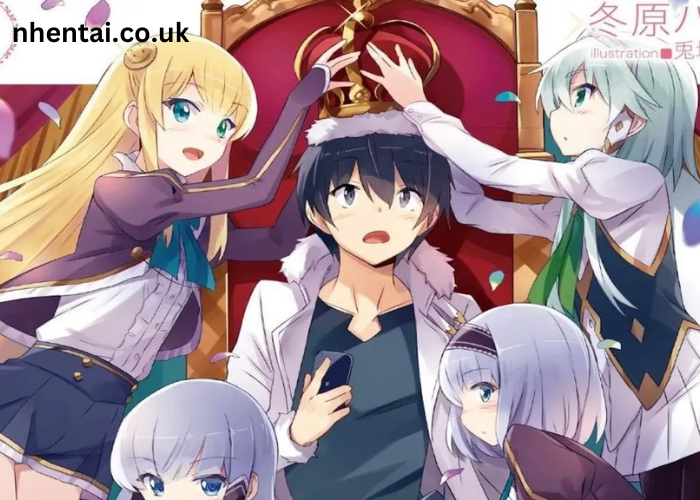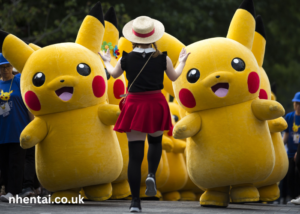Exploring the Origins and Evolution of Hentai in Japanese Media
Hentai, a term widely recognized for its association with explicit and adult-themed Japanese animation and manga, has deep-rooted origins and a complex evolution within Japanese media. Far from being a modern phenomenon, hentai reflects centuries of artistic tradition and cultural shifts. This article delves into the origins, development, and cultural impact of hentai, shedding light on its intricate history and its role in contemporary media. Explore a wide collection of high-quality hentai content on Hentai3z. Enjoy a variety of genres and categories to satisfy your desires.
Historical Origins
The origins of hentai can be traced back to Japan’s Edo period (1603-1868), a time when the nation experienced significant cultural and artistic development. During this era, erotic art, known as shunga, was highly popular. Shunga, meaning “spring pictures,” depicted explicit scenes and was created by some of the most renowned ukiyo-e artists of the time, including Katsushika Hokusai and Kitagawa Utamaro. These works were not only appreciated for their erotic content but also for their artistic merit.
Shunga served as a precursor to modern hentai, setting the stage for the fusion of eroticism and visual art. The themes and styles of shunga have continued to influence Japanese erotic art, demonstrating the long-standing cultural acceptance and artistic exploration of sexuality in Japan.
Evolution in Modern Media
The term “hentai” itself, which translates to “perversion” or “abnormality,” began to be associated with adult content in the 20th century. The post-World War II era marked a significant shift in Japanese media, with the relaxation of censorship laws and the rise of manga and anime as dominant cultural forms. This period saw the birth of modern hentai as we recognize it today.
Manga and Doujinshi: The 1960s and 1970s witnessed the emergence of manga that explored adult themes more explicitly. Artists like Osamu Tezuka and Go Nagai played pivotal roles in pushing the boundaries of content. The creation of doujinshi (self-published works) further expanded the hentai genre, allowing artists to explore niche and taboo subjects with greater freedom.
Anime: The 1980s and 1990s marked the golden age of hentai anime. Productions like “Cream Lemon” and “Urotsukidōji” gained international attention for their explicit content and complex narratives. These works often intertwined eroticism with science fiction, fantasy, and horror elements, broadening the appeal and scope of hentai.
Cultural Impact and Controversies
Hentai has always been a topic of controversy, both within Japan and internationally. Critics argue that it can perpetuate harmful stereotypes and unrealistic portrayals of sexuality. Concerns about the depiction of minors and non-consensual acts have led to stringent censorship laws and regulations, particularly in Western markets.
However, hentai also holds a unique place in Japanese culture and media. It reflects a broader cultural acceptance of exploring sexuality and fantasy through art. Hentai can serve as a form of escapism, allowing individuals to explore desires and scenarios that may be impossible or taboo in real life. It has also been argued that hentai, like other forms of erotic art, can challenge societal norms and provoke discussions about sexuality and consent.
The Digital Age and Global Influence
The advent of the internet has revolutionized the distribution and consumption of hentai. Digital platforms and online communities have made it easier for artists to share their work and for fans to access a vast array of content. This digital transformation has also facilitated the global spread of hentai, influencing erotic art and media worldwide.
Globalization has led to a cross-cultural exchange, with Western artists and creators drawing inspiration from hentai and incorporating its elements into their work. Conversely, Western sensibilities and legal frameworks have influenced how hentai is produced and distributed internationally.
Conclusion
The origins and evolution of hentai in Japanese media are deeply intertwined with Japan’s cultural history and artistic traditions. From the shunga of the Edo period to the digital age, hentai has continually evolved, reflecting changing societal attitudes towards sexuality and media. Despite its controversies, hentai remains a significant and influential genre, offering insights into the complexities of human desire and the power of visual storytelling. As hentai continues to evolve, it will undoubtedly remain a fascinating and provocative subject within the broader context of Japanese and global media.














Post Comment